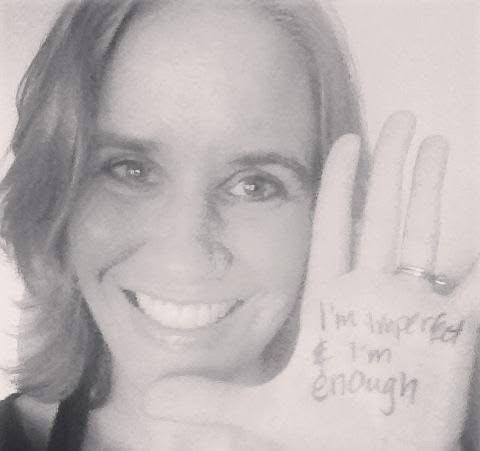Starting (Again) as a Mindful Blogger

Welcome to my blog’s revival—I intend for it to be a space for authentic, helpful content rooted in my nearly 30 years of experience in the mental health field. Whether you’re a fellow therapist, Highly Sensitive Person (HSP), burnt-out achiever, or an empath seeking personal growth, I hope to share insights that resonate. Like many of you, I’m sensitive to the overwhelming noise of the internet, so my intention is to create content that feels grounding and valuable rather than adding to the clutter.
The word “revival” for this blog may be a stretch, since it was never more than a few randomly inspired posts. This time, I hope to be more consistent. But publicly committing to consistency makes me nervous because I honestly don’t know if I’ll follow through. Between my roles as a mom, psychotherapist, and transformational coach, my time and energy are already stretched thin. Even one post a month would feel like a HUGE success to me.
In this post, I share my personal process with revisiting blogging. Even though I’m a therapist and have done lots of my own inner work, I still sometimes struggle with a lifelong theme of perfectionism, and it definitely showed up for me around this blog! I’ll also share how I worked with my perfectionism with the hope that it can help you too.
The Challenge of Consistency, Overwhelm, and Procrastination
My process began with brainstorming ways to set myself up for success. I knew consistency would be a struggle for me, so for months I considered creating a backlog of posts in advance—but I never sat down to write a word. Then, I fantasized about a solo writing retreat at a cozy beach house: long walks, the soothing sound of waves, and uninterrupted hours to pour out my thoughts. But that never happened either.

Next, I spent an evening making an extensive, categorized list of blog ideas. I scoured the internet for inspiration, questioning whether my themes would be helpful or if I even had anything valuable to say. By the end of the night, I felt completely overwhelmed and ready to give up—exactly the opposite of what I had hoped.
Recognizing My Perfectionism
The next morning, as I reflected on my process, I had a moment of clarity: my old, familiar friend, perfectionism, was here. Once I recognized it, I knew I could do something about it.

Despite its name, perfectionism isn’t about being perfect. It’s about the constant feeling that nothing is ever good enough—that no matter how much you do, you could always do more. My perfectionist doesn’t believe I’ll ever be “perfect.” Instead, it keeps me stuck in cycles of overthinking, self-doubt, and inaction.
Perfectionism is almost always linked to the inner critic—that voice inside that questions your worth or tells you you’re not enough. My inner critic was whispering things like:
- “Don’t embarrass yourself.”
- “Do you really have anything valuable to add?”
- “You’re not a good enough writer.”
These voices can be so automatic that we don’t even notice them. That’s exactly what happened to me. My perfectionism had disguised itself as “strategizing,” keeping me spinning in my head instead of taking action.
The Fear Under Perfectionism
When I paused and reflected, I saw the fear underneath my perfectionism. At its core, it wasn’t about doing things perfectly—it was about fear. Fear of being judged or criticized, of falling short, of not living up to the undefined standard I’d created in my mind.
The biggest barrier to me blogging consistently isn’t time management or the demands of being a working mom—although those are very real. It’s the perfectionistic drive to “do a good job” that can paralyze me. This is a cycle I’ve seen in myself and so many others: we strategize and procrastinate endlessly because starting feels vulnerable and risky.
Have you ever noticed perfectionism and fear of not being good enough holding YOU back from starting something new?
Moving Forward In a New Way
But here’s the good news: once we recognize perfectionism running the show, we can do something about it. Awareness is the first step. To truly shift our relationship with perfectionism, we need to better understand it and create a new way of engaging with it.
Understanding Perfectionism and the Inner Critic with Mindfulness and IFS
As a psychotherapist for highly sensitive people, I know that mindfulness and authentic self-compassion are a game changer when it comes to healing and personal growth. If you’re struggling with perfectionism, it’s important to bring curiosity to this process, especially for those of us prone to overthinking and self-criticism.

One of the most effective ways I’ve found to address perfectionism and self-criticism is through Internal Family Systems (IFS) therapy. IFS is a model of therapy that views us as composed of parts led by a core Self, much like the Pixar movie Inside Out. All parts of us are trying to support the larger system in some way, but sometimes they become locked in extreme roles.
IFS helps us see our perfectionist and inner critic as parts of us, not all of us. Specifically, parts like the perfectionist and inner critic are protectors, trying to shield us from hurt, failure, rejection, or shame. Through IFS, we separate or “unblend” from these parts, recognizing they’re just one aspect of us—not the whole. By getting curious about them and approaching them with compassion, we can create more inner freedom.
This is exactly what I did once I recognized that my perfectionist had snuck in without me knowing it. I actually felt great relief in that recognition. Just recognizing a part has taken over interrupts the old pattern. Once I realized what was happening, I could approach things differently.
Approaching her with curiosity, I saw that she was trying to protect me from feeling foolish or hurt by criticism. Her intentions made sense, and when I met her with understanding and validated her efforts, she relaxed. That transformative moment of self-compassion gave me clarity and inspiration for this blog-revival post.
If you struggle with perfectionism or your inner critic, here are 6 mindfulness-based steps to try:
6 Steps to Quiet Your Inner Critic and Shift Out of Perfectionism
STEP 1: Interrupt the Pattern by Checking in to See if a Part of You is Activated
When you notice you’re feeling stuck or overwhelmed, give yourself a moment to pause and reflect. These feelings are often indicators that a part is taking over. Tune inside and see what’s present. Listen to your inner dialogue. Are the words critical? Is your inner critic telling you that you’re not good enough?
Sometimes the inner dialogue is loud and clear, and sometimes it’s more quiet and subtle. Be patient and take time to tune in to what your inner parts are communicating. This is a skill that can take time to develop, so if it doesn’t come easily, know that it will strengthen with practice!
- Try This:
- Pause right now and think of a recent moment when you felt stuck or overwhelmed.
- What was your inner dialogue like in that moment? If you don’t remember exactly, just imagine what it likely was.
- Write it down to begin recognizing the voices that were present.
STEP 2: Acknowledge the Parts of You that are Present
Take a moment to recognize that this striving or critical part is present and needs attention. What might it feel like to pause and acknowledge your inner critic without judgment? Using “parts language” can help, such as saying, “Oh, my inner critic is here,” or “My perfectionist part is taking over.”
- Try This:
- Take Take a deep breath and say out loud, “My inner critic is here” or, “Oh, hello perfectionism.”
- How does it feel to acknowledge this part of you?
- Try naming it or
- tuning into what this part might look like.
STEP 3: “Unblend” and Create Space
Once you recognize the part, create some distance from it. Deep breathing can help expand your sense of Self and remind you that this part is just one aspect of who you are, not the whole. Sometimes these parts are so big and so entrenched that it’s hard to do this on your own, but with practice it gets easier.
- Try This:
- Close your eyes and breathe deeply. Invite the part to feel the calmness of your breath.
- Ask the part to give you some space. If it feels right visualize a boundary between you and the part.
- Notice how yor body feels as you create this space.
STEP 4: Get Curious
See what you can notice about this part. How does it show up in your body? Ask this part of you: What are its concerns? What are you afraid would happen if you don’t do what you’re doing? Often, these parts are working hard to shield us from pain, rejection, or shame. Keep witnessing it with compassion, as you might a struggling friend.
- Try This:
- Ask your inner critic: “What are you afraid would happen if you weren’t here protecting me?”
- Write down what comes up, even if it surprises you.
STEP 5: Practice Self-Compassion
If it feels possible, see if you can offer appreciation for this part and the ways it’s striving to support you and keep you safe. How might expressing gratitude to your inner critic shift your perspective on its protective role in your life? Ask it what it needs to relax. When these parts feel validated and supported, they often soften and trust the larger Self to take the lead.
- Try This:
- Place your hand over your heart and thank this part of you for its efforts to protect you.
- What words of encouragement or kindness can you offer yourself in this moment?
STEP 6: Take Imperfect Action
Getting into action often takes some negotiation within our own system. Sometimes we need to tend to younger, more vulnerable parts of us who have been hurt. But we can start to move forward with small, bite-sized, doable steps. Honor your courage. And remember that progress (not perfection) is worth celebrating.
- Try This:
- Think of one small action you’ve been putting off because it doesn’t feel “perfect” or fully ready. It might be sending an email, drafting a paragraph, or trying a new recipe.
- Set a timer for 10 minutes and give yourself permission to take the next step imperfectly.
- Afterward, take a moment to reflect: How did it feel to take that step, even if it wasn’t perfect?
How might things shift for you if you embraced this approach more often
Moving Forward with Compassion

For me today, the imperfect action is to share this blog entry, trusting that an imperfect post is better than silence. I invite you to take your own imperfect action—what small step can you take today to feel better in some way? Could it be reaching out to a friend, spending a few minutes journaling, or taking a mindful walk?
As I’ve written this post and prepare to hit “publish,” my perfectionist and inner critic have been very close to the surface every step of the way. They’re still very present, ever ready to step in and protect me from vulnerability. I’ve literally worked though the above steps time and again through this blog-writing process. It’s not always neat and tidy. It can be messy and hard and painful. But it’s worth it!

Because I have taken time to be with my parts in a different way, these parts of me are giving me space to take action because they trust me. I’ve built that trust by consistently showing up for them with curiosity and compassion. By listening to their fears, validating their efforts, and assuring them that I can handle vulnerability, I’ve helped them feel supported enough to step back, trust me, and let me lead. They feel heard and understood. They trust that I’ll take care of myself if someone says something mean or critical and that I’ll forgive myself if I’m not perfect in my consistency.
With each imperfect step forward, I remind myself—and encourage you—to celebrate the courage and progress it represents. Let’s honor each small victory as a meaningful step toward growth. Trusting that this blog, with all its imperfections is enough for now.
Imagine transforming your relationship with your inner critic and perfectionist. What might you accomplish if you were less afraid of messing up or being criticized?
Start Your Therapy Journey
These steps can help you create a more compassionate relationship with yourself and ease the grip of perfectionism. But navigating this journey on your own can feel overwhelming. Old patterns often take over without us realizing it, and an experienced therapist can help you identify and work with these patterns. Support can make all the difference.

If you’re ready to take the next step, book your free 15-minute consultation today and start transforming your relationship with your inner critic. I offer in person and online counseling sessions in Georgia. Contact me at christinarussell.lpc@gmail.com to see if we’re a good fit.